Exergy Analysis of a Syngas-Fueled Combined Cycle with Chemical-Looping Combustion and CO2 Sequestration
Abstract
:1. Introduction
1.1. The Chemical-Looping Combustion Concept
2. Description of the Study
2.1. Cycle Description and Operating Conditions
- Introduction of an air pre-heater in order to take advantage of the solids’ heat capacity to increase the air mass flow through GT1. This idea is proposed by [6].
- The oxidation and reduction reaction must be pressure-linked due to the chemical looping followed by the oxygen carrier. As suggested by [7], a second gas turbine (GT2) is then introduced to convert into work the pressurized CO2 and H2O mixture generated in the reduction reaction. This work is maximized by heating this stream from the highest available temperature heat source, the oxidation reactor.
- Ambient conditions: (), (), 60% RH (relative humidity).
- Fuel conditions: (), .
- Pressure drop at the air filter: .
- Isentropic efficiency of compressors: 0.845.
- Isentropic efficiency of gas turbines: 0.895.
- Pressure drop in reactors: 4%.
- Heat losses in reactors: 0.5% in the oxidation reactor, 0.2% in the reduction reactor.
- Pressure drop in the heat recovery steam generator (HRSG): 3.5%.
- Pressure drop in other heat exchangers: 1%.
- Pinch point in heat exchanges: in gas–gas exchanges, in the air pre-heater.
- Temperature of flue gases at the HRSG outlet: dew point and never under ().
- Final pressure for CO2 storage: .
2.2. Oxygen Carrier
2.3. Fuels under Study
2.4. The Exergy Method
- is the molar flow rate of a stream;
- e is the thermodynamic function of state flow exergy;
- is the heat flow rate exchanged by the system;
- is the entropy transfer rate associated with heat flow. For a single temperature system:; for a multi-temperature system: ;
- is the mechanical power extracted from the system;
- is the exergy destruction rate due to internal irreversibilities.
- The so-called physical exergy involves thermal and mechanical imbalances with the environment. Disregarding kinetic and potential energy, this term can be shown to be equal to:As usual, h and s are the molar enthalpy and entropy of the stream, respectively, at its current temperature and pressure. The subscript “0” represents the inert state, i.e., the referred thermodynamic function is evaluated considering that stream at ambient temperature and pressure.
- The so-called chemical exergy involves diffusive and chemical imbalances with the environment. The process by which equilibrium would be attained should happen at constant temperature equal to (ambient temperature). It can be shown that the maximum theoretical work per mol of substance produced in such a process is the opposite to the change of the specific Gibbs function:For a pure substance, this can also be split into two terms:
- -
- The first one represents the change of the Gibbs function per mol of substance that happens in a degradation chemical transformation until chemical equilibrium with the environment:For instance, in the case of a fuel, this would be referred to as the combustion reaction. In the case of substances present in the atmosphere in the same form, this term would not exist, e.g., nitrogen, oxygen, carbon dioxide, water, etc.
- -
- Since this degradation chemical reaction should occur considering that the involved reactionand products are taken from or given to the environment in a manner that the diffusive equilibrium is also satisfied, a second term is needed to account for the change of the Gibbs function per mol of substance required for the chemical potentials of the substances to get equal to their actual values in the environment:where is the ambient pressure, represents the chemical potential of substance j involved in the degradation reaction (in pure form or its actual value in the environment) and denotes the stoichiometric coefficient of substance j in that reaction. For the case of gases, usually, the atmosphere is considered to behave as an ideal gas mixture, giving , where is the molar fraction of gas j in the atmosphere. As an example, for the case of methane, the degradation reaction would be the combustion (with , , ), and:
Thus, the chemical exergy of a pure substance is calculated as:There are several sources that tabulate the standard chemical exergy of pure substances. In this work, we base the calculations on the values given by [16].Finally, for a mixture of substances, the chemical exergy could be calculated as the average chemical exergy of the individual components taking part, plus an additional term that accounts for the change of the specific Gibbs function associated with the separation of the mixture into its components in pure form at ambient temperature and pressure. Considering a mixture with C components, this would be:where is the molar fraction of the component j in the mixture. If it can be seen as an ideal Lewis–Randall mixture, the specific mixing Gibbs function is given by .
2.5. Simulation Methodology
2.6. Thermodynamic Modeling
- The IAPWS-IF97 equation of state for water where temperature exceeds the water boiling temperature at that pressure.
- The virial gas equation of state truncated after the second term for gaseous water in the cycle points where temperature is below the water boiling temperature at that pressure (but exceeds the water boiling temperature at water’s partial pressure at that point, so water is found in the gaseous state).
- The virial gas equation of state truncated after the second term for all non-condensable gases when their specific volume is at least twice the critical specific volume.
- Lee–Kesler’s equation of state for the rest of the cases, i.e., non-condensable gases, where specific volume is lower than twice the critical specific volume, and supercritical fluids.
3. Results and Discussion
3.1. Chemical Equilibrium
3.2. Cycle Optimization and Exergy Efficiency
- (a)
- Lower temperature of gas streams at the outlet of the gas turbines.
- (b)
- A decrease of heat demand in the reduction reactor.
3.3. Exergy Balances
- The optimal pressure for Syngas B is and for Syngas C is . As mentioned previously, this is related to the fact that for Syngas B, the optimal point is reached at pressures lower than the RRHUP, and for Syngas C, the optimal point is found at higher pressures. This is reflected in higher compression power, higher flow exergy of air and oxygen carrier streams and higher power production in GT1 for the case of Syngas C.
- The exergy destruction in the “syngas compressor” is very small for the case of Syngas C. Actually, since fuel admission pressure has been set at , as a matter of fact, the “syngas compressor” is acting merely as an isenthalpic pressure loss instead of a compression in both cases represented here. However, the pressure loss is very small for the case of Syngas C (down to ) and somewhat larger for Syngas B (down to ).
3.4. Comparison with a Conventional Gas Turbine Cycle
4. Conclusions
- The exergy destruction in the combustion chemical transformation with CLC is about three quarters that of the conventional combustion. Even considering the additional exergy losses that happen in the CLC case, the power produced by the gas turbine system is somewhat higher for the CLC system.
- The exergy efficiency of a CLC gas turbine combined cycle including a carbon sequestration and storage module is very notable. Figures of about 50% are reached, including the important power consumption for CO2 compression up to the storage pressure.
- The optimal pressure ratios from an exergetic point of view are moderate and easily attainable for modern gas turbine systems, although some differences between fuels have been found. Furthermore, a wide range of pressure ratios still gives a good performance due to the peculiar behavior of the efficiency curves.
- Chemical equilibrium calculations confirm that the heat balance can be achieved at the reduction reactor with a high degree of the fuel oxidation ratio in a temperature range of 720–820 K.
- The combination of some thermodynamic effects induces a peculiar tendency change of the optimal reduction temperature with the operating conditions when the so-called reduction reactor heating uncoupling point is reached. This phenomenon implies an extra power production in the CLC-based gas turbines in comparison with the expected tendency.
- The fuel’s composition has an important role in relation to the exergy flows that take place in the CLC cycle. The influence of fuel composition is much more important in determining the optimal cycle conditions than in the case of conventional combustion, due to the complex dynamics regarding chemical equilibrium and heat flows and balances in CLC reactors.
Acknowledgments
Author Contributions
Conflicts of Interest
Nomenclature
| Standard enthalpy of formation | Molar flow rate | ||
| Standard Gibbs function of formation | Heat flow rate | ||
| Ambient pressure | Entropy transfer rate by heat flow | ||
| Ambient temperature | Mechanical power | ||
| Pressure at CLC reactors | Exergy destruction rate | ||
| Reduction reactor temperature | Total exergy loss rate | ||
| h | Specific molar enthalpy | Exergy flow rate | |
| s | Specific molar entropy | x | molar fraction |
| g | Specific molar Gibbs function | Chemical equilibrium constant | |
| Specific mixing Gibbs function | CR | Conversion ratio | |
| e | Flow exergy | ν | Stoichiometric coefficient |
| Chemical term of flow exergy | μ | Chemical potential | |
| Physical term of flow exergy | Exergetic efficiency |
References
- Chiesa, P.; Consonni, S. Natural gas fired combined cycles with low CO2 emissions. J. Eng. Gas. Turbines Power 2000, 122, 429–436. [Google Scholar] [CrossRef]
- Urech, J.; Tock, L.; Harkin, T.; Hoadley, A.; Maréchal, F. An assessment of different solvent-based capture technologies within an IGCC–CCS power plant. Energy 2014, 64, 268–276. [Google Scholar] [CrossRef]
- Hagi, H.; Moullec, Y.L.; Nemer, M.; Bouallou, C. Performance assessment of first generation oxy-coal power plants through an exergy-based process integration methodology. Energy 2014, 69, 272–284. [Google Scholar] [CrossRef]
- Lewis, W.K.; Gilliland, E.R. Production of pure carbon dioxide. U.S. Patent 2,665,972A, 12 January 1954. [Google Scholar]
- Ishida, M.; Jin, H. A new advanced power-generation system using chemical-looping combustion. Energy 1994, 19, 415–422. [Google Scholar] [CrossRef]
- Zhang, X.; Han, W.; Hong, H.; Jin, H. A chemical intercooling gas turbine cycle with chemical-looping combustion. Energy 2009, 34, 2131–2136. [Google Scholar] [CrossRef]
- Anheden, M.; Svedberg, G. Exergy analysis of chemical-looping combustion systems. Energy Convers. Manag. 1998, 39, 1967–1980. [Google Scholar] [CrossRef]
- Anheden, M. Analysis of Gas Turbine Systems for Sustainable Energy Conversion. Ph.D. Thesis, Royal Institute of Technology, Stockholm, Sweden, 2000. [Google Scholar]
- Álvaro, Á.J.; Paniagua, I.L.; Fernández, C.G.; Carlier, R.N.; Martín, J.R. Energetic analysis of a syngas-fueled chemical-looping combustion combined cycle with integration of carbon dioxide sequestration. Energy 2014, 76, 694–703. [Google Scholar] [CrossRef]
- Richter, H.J.; Knocke, K.F. Reversibility of combustion processes. In Efficiency and Costing; American Chemical Society: Washington, DC, USA, 1983; pp. 71–86. [Google Scholar]
- Zheng, D.; Jing, X. Chemical amplifier and energy utilization principles of heat conversion cycle systems. Energy 2013, 63, 180–188. [Google Scholar] [CrossRef]
- Ishida, M.; Jin, H. A novel chemical-looping combustor without NOx formation. Ind. Eng. Chem. Res. 1996, 35, 2469–2472. [Google Scholar] [CrossRef]
- Consonni, S.; Lozza, G.; Pelliccia, G.; Rossini, S.; Saviano, F. Chemical-looping combustion for combined cycles with CO2 capture. J. Eng. Gas. Turbines Power 2006, 128, 525–534. [Google Scholar] [CrossRef]
- Nieto, R.; González, C.; López, I.; Jiménez, Á. Efficiency of a standard gas-turbine power generation cycle running on different fuels. Int. J. Exergy 2011, 9, 112–126. [Google Scholar] [CrossRef]
- Mínguez, M.; Jiménez, Á.; Rodríguez, J.; González, C.; López, I.; Nieto, R. Analysis of energetic and exergetic efficiency, and environmental benefits of biomass integrated gasification combined cycle technology. Waste Manag. Res. 2013, 31, 401–412. [Google Scholar] [CrossRef] [PubMed]
- Kotas, T.J. The Exergy Method of Thermal Plant Analysis; Butterworths: London, UK, 1985. [Google Scholar]
- Escudero, M.; Jiménez, Á.; González, C.; Nieto, R.; López, I. Analysis of the behavior of biofuel-fired gas turbine power plants. Therm. Sci. 2012, 16, 849–864. [Google Scholar] [CrossRef]
- Search for Species Data by Chemical Formula. Available online: http://webbook.nist.gov/chemistry/form-ser.html (accessed on 17 August 2016).
- Daubert, T.E.; Danner, R.P. Physical and Thermodynamic Properties of Pure Chemicals: Data Compilation; Hemisphere Publishing: New York, NY, USA, 1989. [Google Scholar]
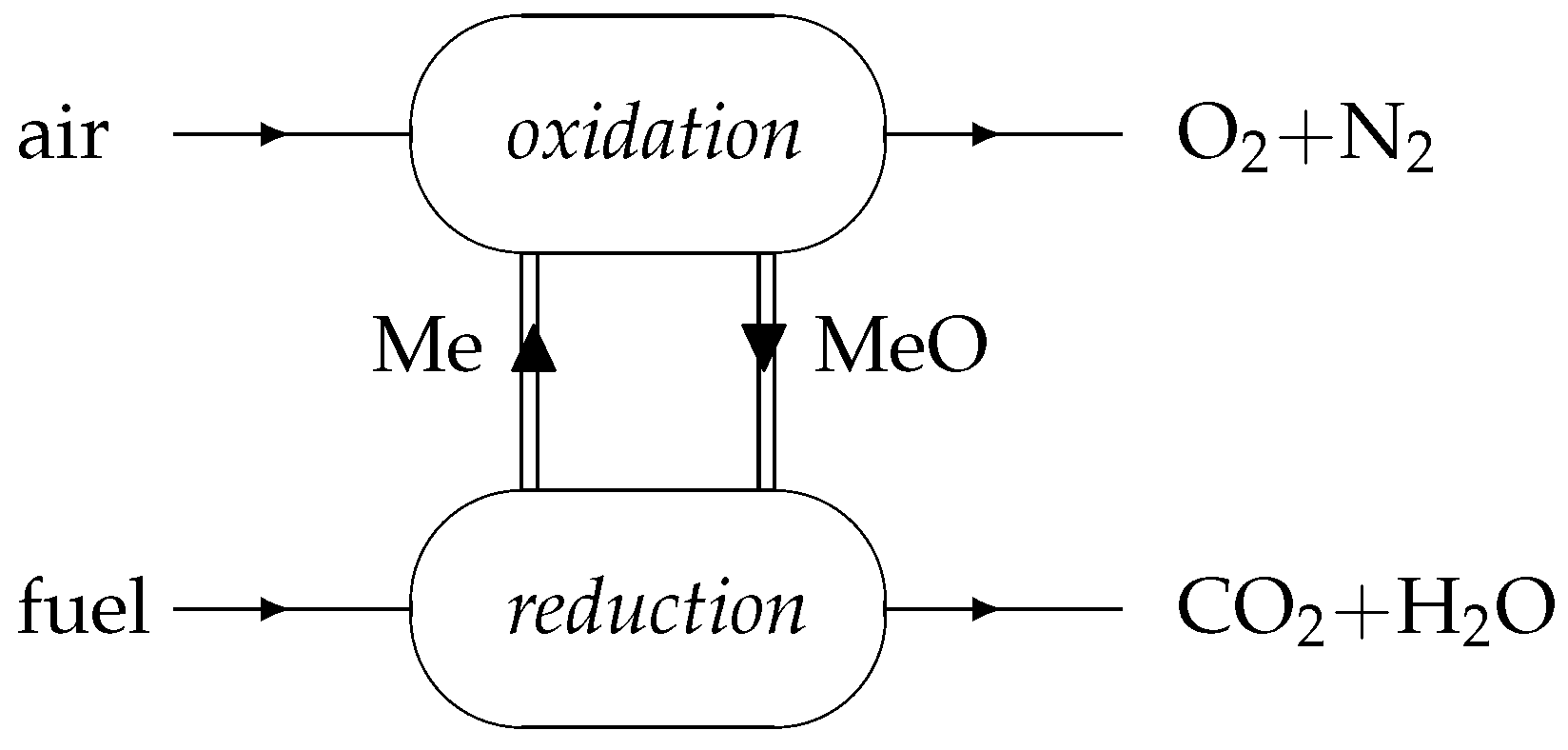

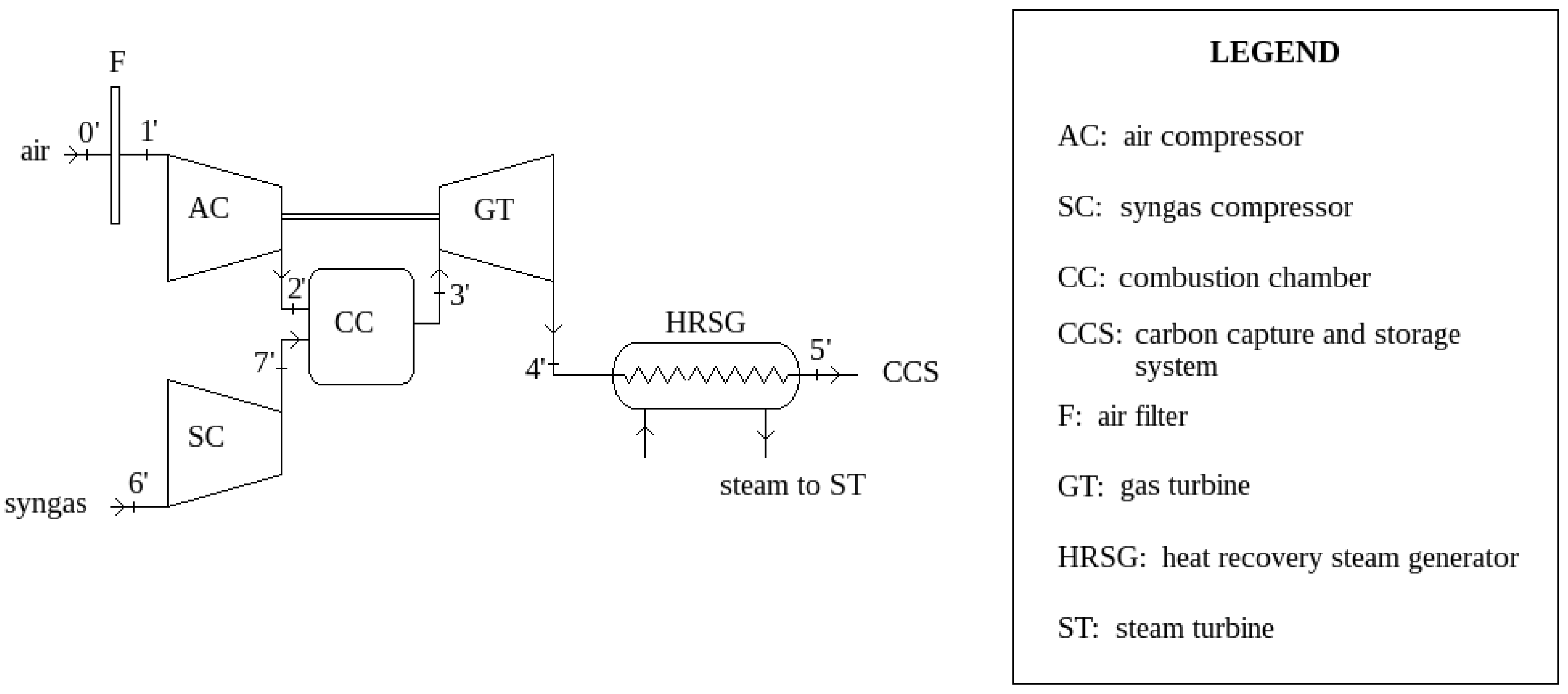
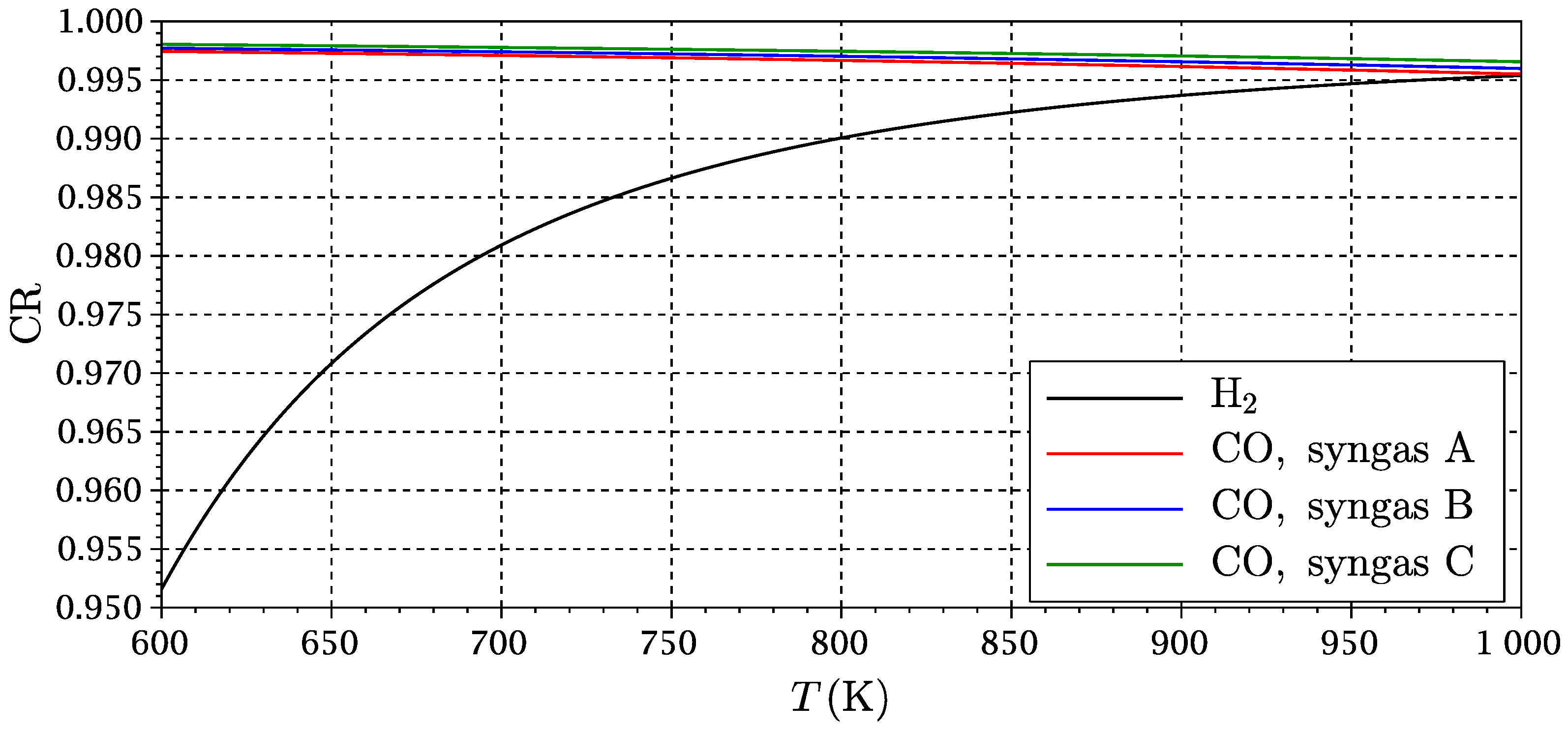

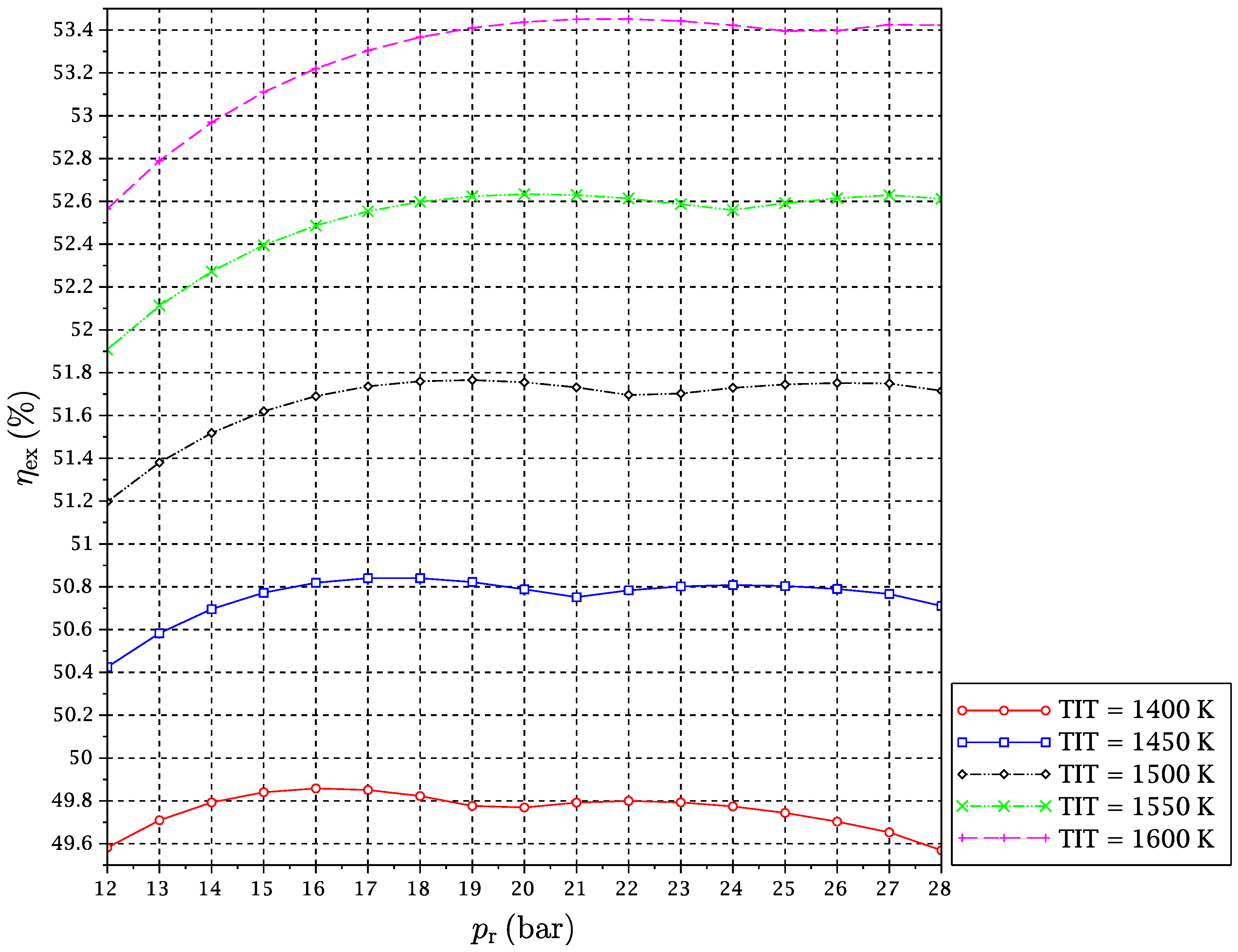

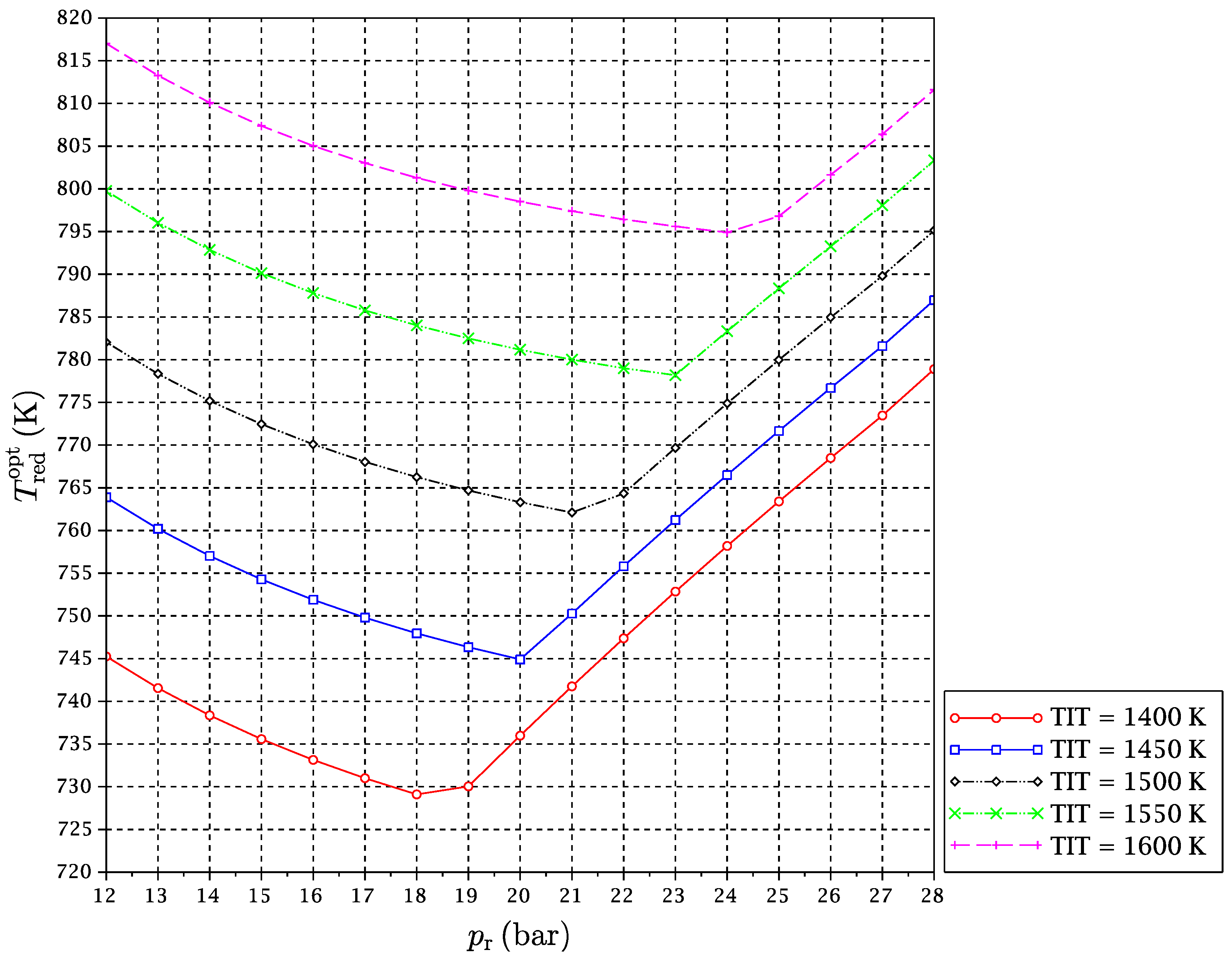
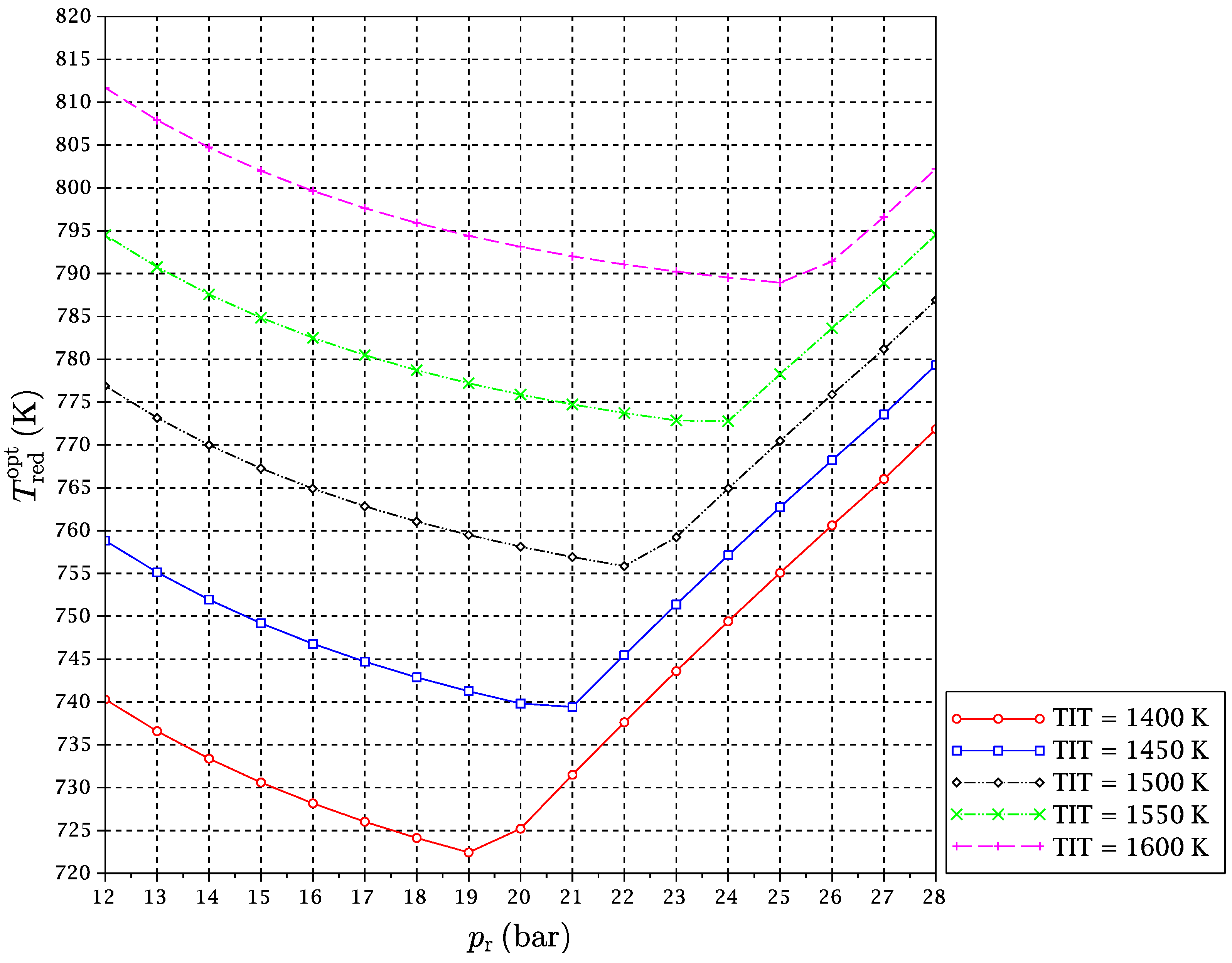

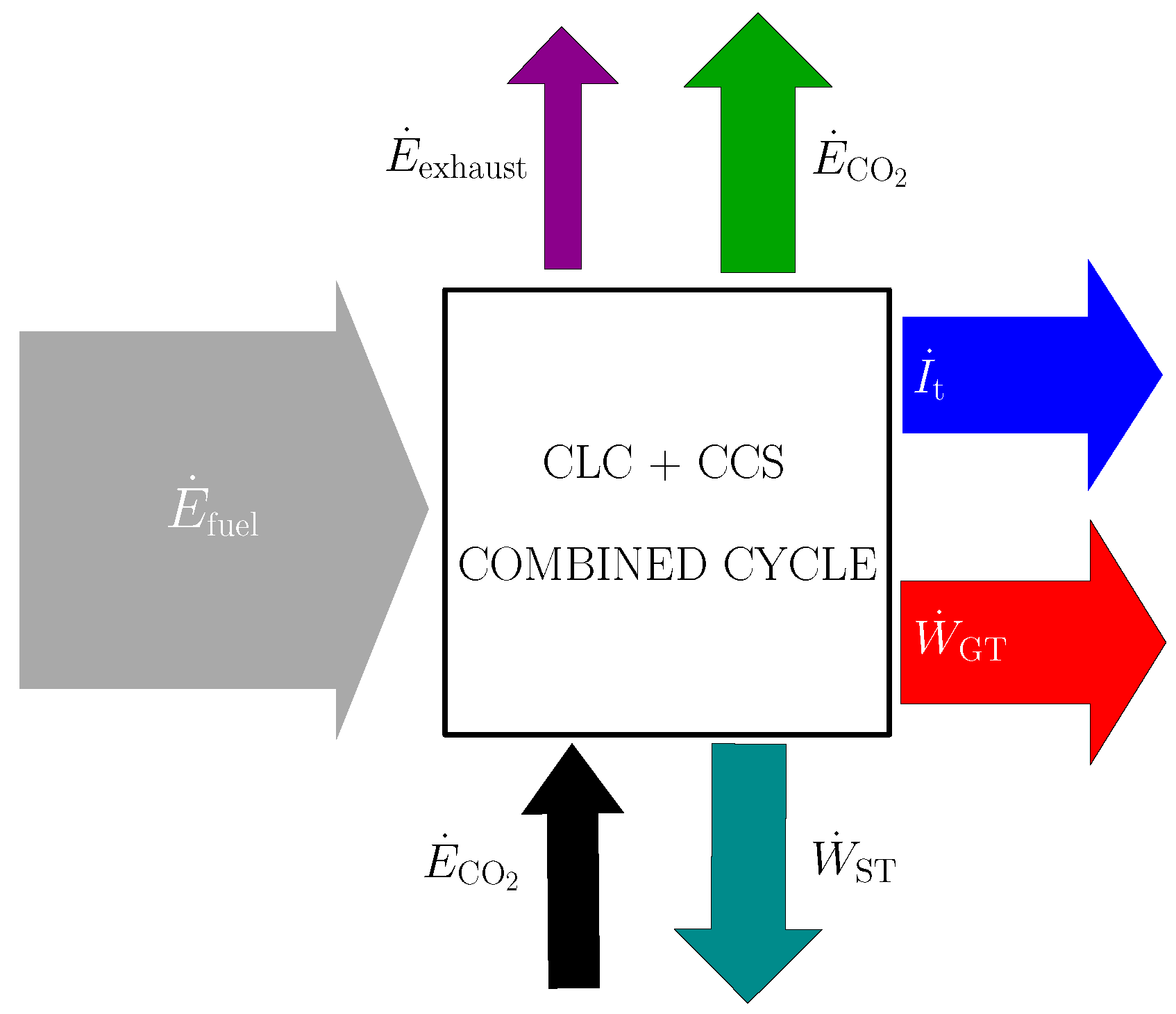
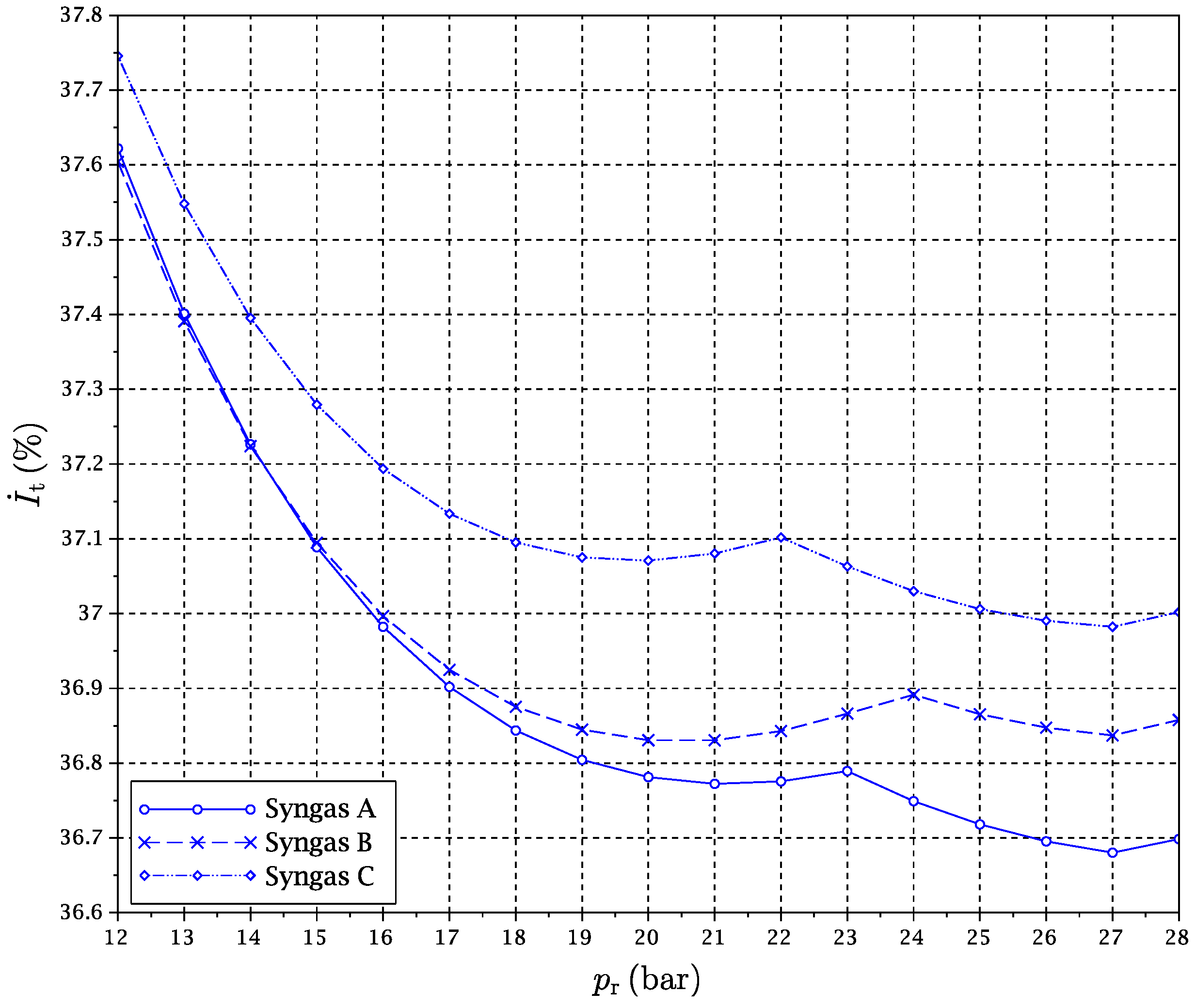
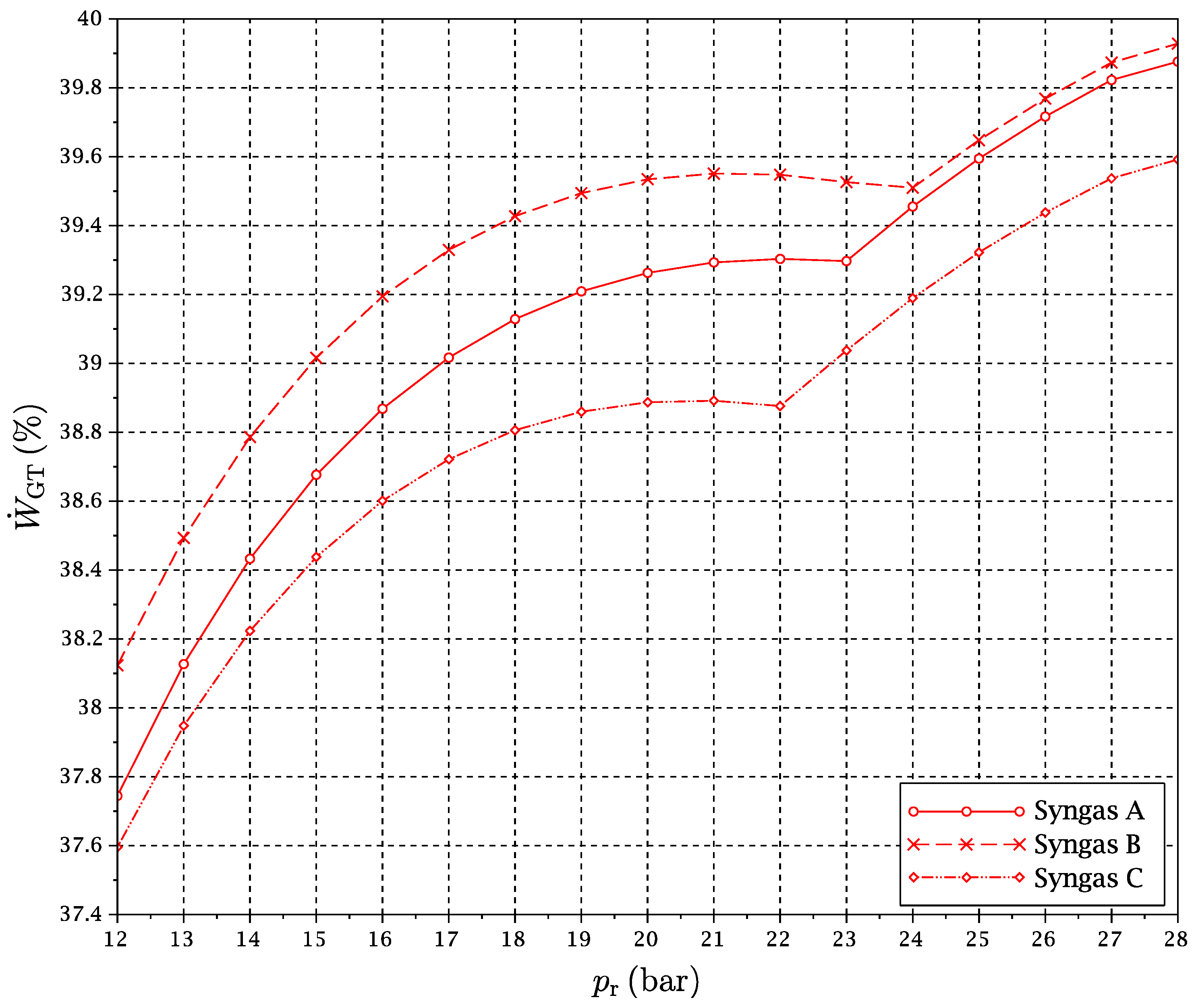

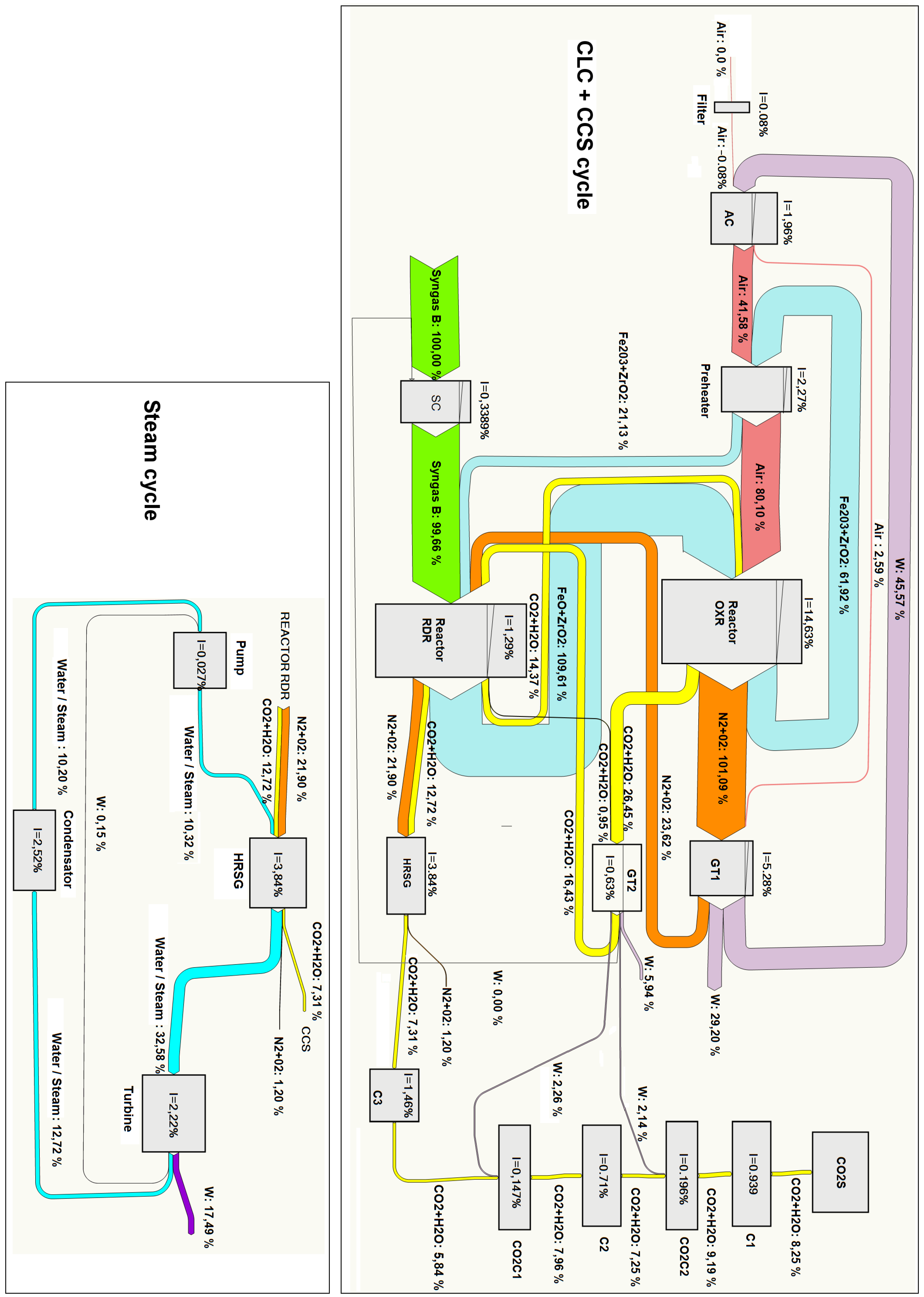

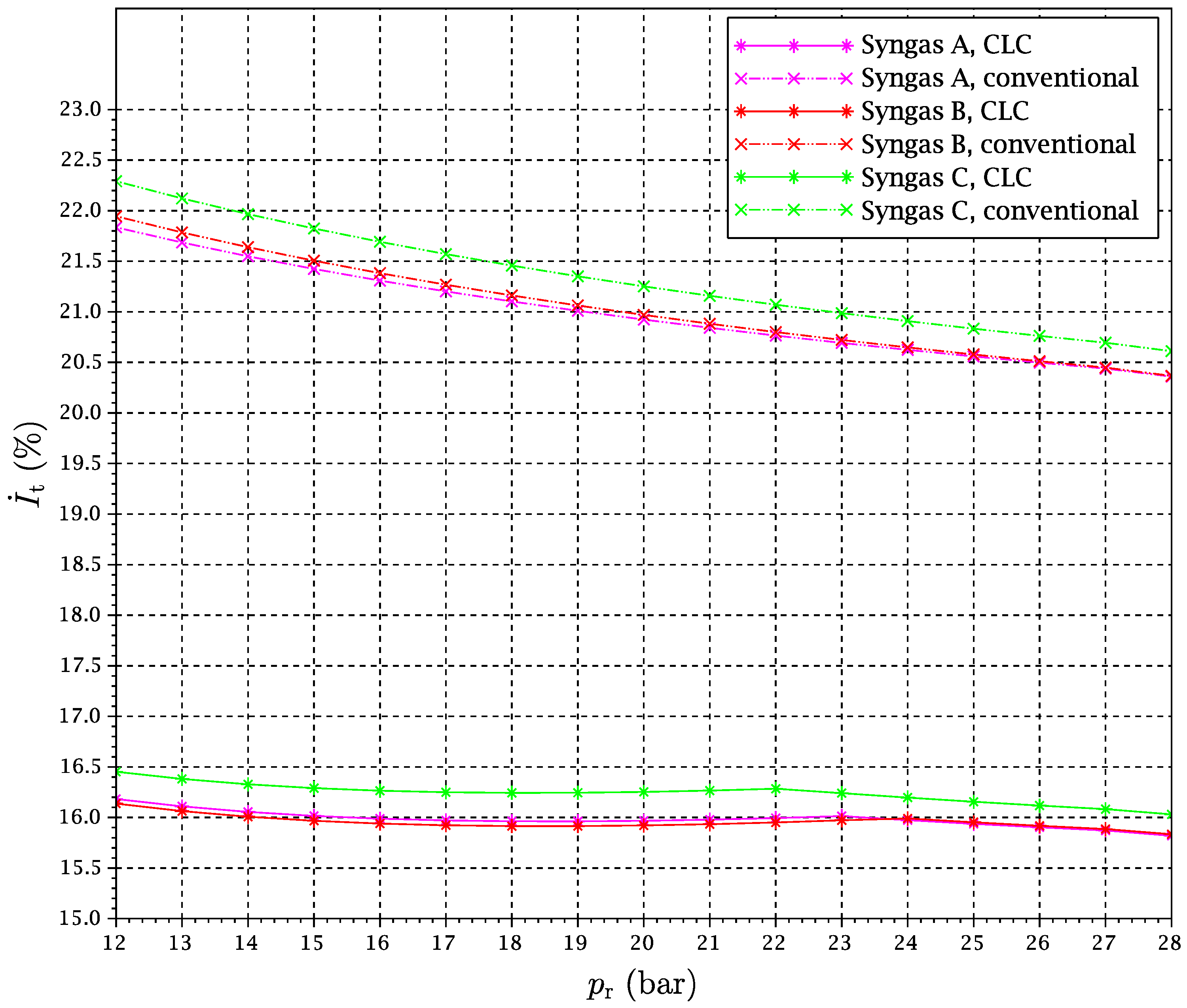
| Fuel | Substrate | CO | H2 | CO2 | N2 | Ar | H2O | LHV | |
|---|---|---|---|---|---|---|---|---|---|
| (%) | (%) | (%) | (%) | (%) | (%) | (kJ/mol) | (kJ/mol) | ||
| Syngas A | Wood waste | ||||||||
| Syngas B | Miscanthus | ||||||||
| Syngas C | Pittsburgh n8 |
| TIT (K) | Syngas A | Syngas B | Syngas C | ||||||
|---|---|---|---|---|---|---|---|---|---|
| (bar) | (K) | (%) | (bar) | (K) | (%) | (bar) | (K) | (%) | |
| 1400 | 22 | 747.9 | 48.55 | 16 | 728.2 | 49.86 | 22 | 762.0 | 50.16 |
| 1450 | 24 | 766.5 | 49.54 | 18 | 742.9 | 50.84 | 23 | 775.7 | 51.15 |
| 1500 | 26 | 784.9 | 50.47 | 19 | 759.5 | 51.76 | 25 | 795.1 | 52.08 |
| 1550 | 27 | 798.1 | 51.33 | 20 | 775.9 | 52.63 | 27 | 813.8 | 52.95 |
| 1600 | 27 | 806.4 | 52.11 | 22 | 791.0 | 53.45 | 27 | 821.1 | 53.74 |
| Stream | T | p | ||||||||
|---|---|---|---|---|---|---|---|---|---|---|
| (mol/s) | (K) | (bar) | (%) | (%) | (%) | (%) | (%) | (%) | (%) | |
| 0 | 9.424 | 288.2 | 1.013 | 77.257 | 20.778 | 0.926 | 0.030 | 1.010 | 0.000 | 0.000 |
| 1 | 9.424 | 288.1 | 1.003 | 77.257 | 20.778 | 0.926 | 0.030 | 1.010 | 0.000 | 0.000 |
| 2 | 8.839 | 800.0 | 27.270 | 77.257 | 20.778 | 0.926 | 0.030 | 1.010 | 0.000 | 0.000 |
| 3 | 8.839 | 1229.6 | 27.000 | 77.257 | 20.778 | 0.926 | 0.030 | 1.010 | 0.000 | 0.000 |
| 4 | 8.374 | 1550.0 | 25.920 | 81.546 | 16.380 | 0.977 | 0.031 | 1.066 | 0.000 | 0.000 |
| 5 | 8.959 | 763.6 | 1.059 | 81.266 | 16.667 | 0.974 | 0.031 | 1.062 | 0.000 | 0.000 |
| 6 | 8.959 | 763.6 | 1.049 | 81.266 | 16.667 | 0.974 | 0.031 | 1.062 | 0.000 | 0.000 |
| 7 | 8.959 | 363.2 | 1.013 | 81.266 | 16.667 | 0.974 | 0.031 | 1.062 | 0.000 | 0.000 |
| 8 | 1.000 | 426.6 | 27.244 | 1.780 | 0.000 | 0.530 | 4.250 | 0.020 | 63.770 | 29.650 |
| 9 | 1.000 | 426.8 | 27.000 | 1.780 | 0.000 | 0.530 | 4.250 | 0.020 | 63.770 | 29.650 |
| 10 | 0.938 | 813.8 | 25.920 | 1.780 | 0.000 | 0.530 | 67.855 | 29.399 | 0.165 | 0.271 |
| 11 | 0.938 | 1540.0 | 25.661 | 1.780 | 0.000 | 0.530 | 67.855 | 29.399 | 0.165 | 0.271 |
| 12 | 1.000 | 1010.9 | 1.515 | 1.780 | 0.000 | 0.530 | 67.855 | 29.399 | 0.165 | 0.271 |
| 13 | 1.000 | 823.8 | 1.500 | 1.780 | 0.000 | 0.530 | 67.855 | 29.399 | 0.165 | 0.271 |
| 14 | 1.000 | 363.2 | 1.448 | 1.780 | 0.000 | 0.530 | 67.855 | 29.399 | 0.165 | 0.271 |
| 15 | 0.722 | 298.2 | 1.448 | 2.466 | 0.000 | 0.734 | 94.006 | 2.190 | 0.229 | 0.376 |
| 16 | 0.722 | 484.5 | 11.092 | 2.466 | 0.000 | 0.734 | 94.006 | 2.190 | 0.229 | 0.376 |
| 17 | 0.708 | 298.2 | 11.092 | 2.514 | 0.000 | 0.749 | 95.836 | 0.286 | 0.233 | 0.383 |
| 18 | 0.708 | 491.7 | 85.000 | 2.514 | 0.000 | 0.749 | 95.836 | 0.286 | 0.233 | 0.383 |
| 19 | 0.706 | 298.2 | 85.000 | 2.520 | 0.000 | 0.750 | 96.075 | 0.037 | 0.234 | 0.384 |
| 20 | 1.432 | 850.0 | 27.000 | - | - | - | - | - | - | - |
| 21 | 2.362 | 813.8 | 27.000 | - | - | - | - | - | - | - |
| 22 | 1.432 | 1550.0 | 27.000 | - | - | - | - | - | - | - |
| 23 | 2.254 | 743.6 | 67.000 | 0.000 | 0.000 | 0.000 | 0.000 | 100.000 | 0.000 | 0.000 |
| 24 | 2.254 | 312.2 | 0.070 | 0.000 | 0.000 | 0.000 | 0.000 | 100.000 | 0.000 | 0.000 |
| 25 | 2.254 | 312.2 | 0.070 | 0.000 | 0.000 | 0.000 | 0.000 | 100.000 | 0.000 | 0.000 |
| 26 | 2.254 | 312.8 | 76.000 | 0.000 | 0.000 | 0.000 | 0.000 | 100.000 | 0.000 | 0.000 |
| Fuel | ||||||
|---|---|---|---|---|---|---|
| (%) | (%) | (%) | (%) | (%) | (%) | |
| Syngas A | 10.07 | 1.20 | 39.82 | 16.99 | 37.41 | |
| Syngas B | 8.25 | 1.20 | 39.54 | 17.49 | 37.92 | |
| Syngas C | 8.17 | 1.29 | 39.54 | 17.50 | 37.59 |
| Fuel | Combustion Type | |||||
|---|---|---|---|---|---|---|
| (%) | (%) | (%) | (%) | (%) | ||
| Syngas A | CLC | 35.15 | 39.26 | 15.97 | 9.62 | 25.59 |
| conventional | 33.60 | 38.60 | 20.92 | 6.88 | 27.80 | |
| Syngas B | CLC | 34.62 | 39.53 | 15.92 | 9.93 | 25.85 |
| conventional | 33.24 | 38.73 | 20.97 | 7.06 | 28.03 | |
| Syngas C | CLC | 34.84 | 38.89 | 16.25 | 10.02 | 26.27 |
| conventional | 33.09 | 38.80 | 20.98 | 7.13 | 28.11 |
© 2016 by the authors; licensee MDPI, Basel, Switzerland. This article is an open access article distributed under the terms and conditions of the Creative Commons Attribution (CC-BY) license (http://creativecommons.org/licenses/by/4.0/).
Share and Cite
Urdiales Montesino, Á.; Jiménez Álvaro, Á.; Rodríguez Martín, J.; Nieto Carlier, R. Exergy Analysis of a Syngas-Fueled Combined Cycle with Chemical-Looping Combustion and CO2 Sequestration. Entropy 2016, 18, 314. https://doi.org/10.3390/e18090314
Urdiales Montesino Á, Jiménez Álvaro Á, Rodríguez Martín J, Nieto Carlier R. Exergy Analysis of a Syngas-Fueled Combined Cycle with Chemical-Looping Combustion and CO2 Sequestration. Entropy. 2016; 18(9):314. https://doi.org/10.3390/e18090314
Chicago/Turabian StyleUrdiales Montesino, Álvaro, Ángel Jiménez Álvaro, Javier Rodríguez Martín, and Rafael Nieto Carlier. 2016. "Exergy Analysis of a Syngas-Fueled Combined Cycle with Chemical-Looping Combustion and CO2 Sequestration" Entropy 18, no. 9: 314. https://doi.org/10.3390/e18090314
APA StyleUrdiales Montesino, Á., Jiménez Álvaro, Á., Rodríguez Martín, J., & Nieto Carlier, R. (2016). Exergy Analysis of a Syngas-Fueled Combined Cycle with Chemical-Looping Combustion and CO2 Sequestration. Entropy, 18(9), 314. https://doi.org/10.3390/e18090314






